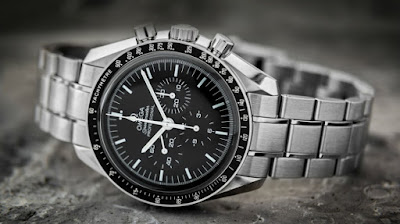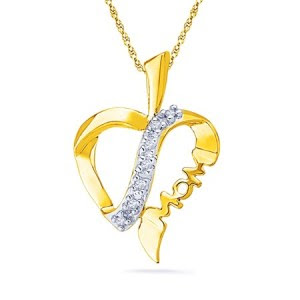The Ins and Outs of Hesalite
Why could a watch with a Hesalite glass be the right choice? This
article briefly highlights the properties of this plastic and sheds
light on how it differs from glasses made of mineral and sapphire glass.
Hesalite glass is much softer than mineral or sapphire glass and
therefore much more sensitive to scratches. At first glance, this may
look like a disadvantage, but depending on the situation and area of
use, it also has several advantages: Due to its soft properties, the
glass is more flexible, which means that Hesalite is much more
break-resistant than mineral and sapphire glass. The material is also
extremely impact-resistant. It can tear, but not splinter. Another
advantage is that smaller scratches can be easily removed with a polish.
Hesalite glass is very resilient and can perform its service on the watch for decades if handled properly. Due to its material properties, Hesalite does not reflect any light and - unlike sapphire glass - does not need an anti-reflective coating. As a result, the dial appears clearer and more distinct. Glasses made of this plastic also give watches a certain vintage character, which is of course a matter of taste and does not always serve the overall character of certain watches.
Another advantage of Hesalite glasses is that they are inexpensive and easy to install. If an acrylic glass needs to be replaced, most watchmakers can do so cheaply and easily.
Over the past decades, watches with Hesalite glass have repeatedly
proven themselves as the right choice for pretty much any situation and
activity. Sir Edmund Hillary wore a Rolex Explorer with plastic glass
during his legendary Mount Everest expedition in 1953. In 1969, the
Omega Speedmaster Moonwatch (with the reference "ST 105.012") even
accompanied Buzz Aldrin to the moon and back, equipped with the
legendary 321 caliber.
Then as now, this classic is equipped with Hesalite glass. With the so-called EVA (extravehicular activity) certification, the Moonwatch is even suitable for outboard applications in space. Theoretically, Hesalite glass can even be used for diving watches, given that a particularly thick and therefore resistant glass is used. Nevertheless, the use of acrylic glasses for diving watches is rather unusual today due to their generally higher water permeability compared to sapphire glass.
If you are in search of latest silver bracelets for women and want to know more about it then please contact us in the comment section.
One plastic - many names: Acrylic, Plexi, Hesalite
Watch glasses based on the plastic “polymethyl methacrylate” (PMMA) has been produced since the late 1920s. These days, this material is still used under the name acrylic in industry, crafts, medicine and art. Acrylic has also been used in the watch industry for many decades to manufacture watch glasses. Other terms for the same material are Plexi or Hesalite. Subsequently, the term "Hesalite glass", which was first coined by Omega, is used synonymously for all glasses made of polymethyl methacrylate.
What are the characteristics of Hesalite?
Hesalite glass is much softer than mineral or sapphire glass and
therefore much more sensitive to scratches. At first glance, this may
look like a disadvantage, but depending on the situation and area of
use, it also has several advantages: Due to its soft properties, the
glass is more flexible, which means that Hesalite is much more
break-resistant than mineral and sapphire glass. The material is also
extremely impact-resistant. It can tear, but not splinter. Another
advantage is that smaller scratches can be easily removed with a polish.Hesalite glass is very resilient and can perform its service on the watch for decades if handled properly. Due to its material properties, Hesalite does not reflect any light and - unlike sapphire glass - does not need an anti-reflective coating. As a result, the dial appears clearer and more distinct. Glasses made of this plastic also give watches a certain vintage character, which is of course a matter of taste and does not always serve the overall character of certain watches.
Another advantage of Hesalite glasses is that they are inexpensive and easy to install. If an acrylic glass needs to be replaced, most watchmakers can do so cheaply and easily.
What are the pros of a watch with Hesalite glass?
Over the past decades, watches with Hesalite glass have repeatedly
proven themselves as the right choice for pretty much any situation and
activity. Sir Edmund Hillary wore a Rolex Explorer with plastic glass
during his legendary Mount Everest expedition in 1953. In 1969, the
Omega Speedmaster Moonwatch (with the reference "ST 105.012") even
accompanied Buzz Aldrin to the moon and back, equipped with the
legendary 321 caliber.Then as now, this classic is equipped with Hesalite glass. With the so-called EVA (extravehicular activity) certification, the Moonwatch is even suitable for outboard applications in space. Theoretically, Hesalite glass can even be used for diving watches, given that a particularly thick and therefore resistant glass is used. Nevertheless, the use of acrylic glasses for diving watches is rather unusual today due to their generally higher water permeability compared to sapphire glass.
Conclusion
Anyone, who has so far shied away from buying a watch with Hesalite glass, because it was not robust enough or only partly suitable for everyday use, can rest assured: High-quality watches with Hesalite glass can withstand almost everything. In some material properties, such as break resistance and low light reflection, they are even superior to mineral or sapphire glasses. In addition to that, they give certain watches a very cool vintage charm and score with lower acquisition and repair cost.If you are in search of latest silver bracelets for women and want to know more about it then please contact us in the comment section.






Comments